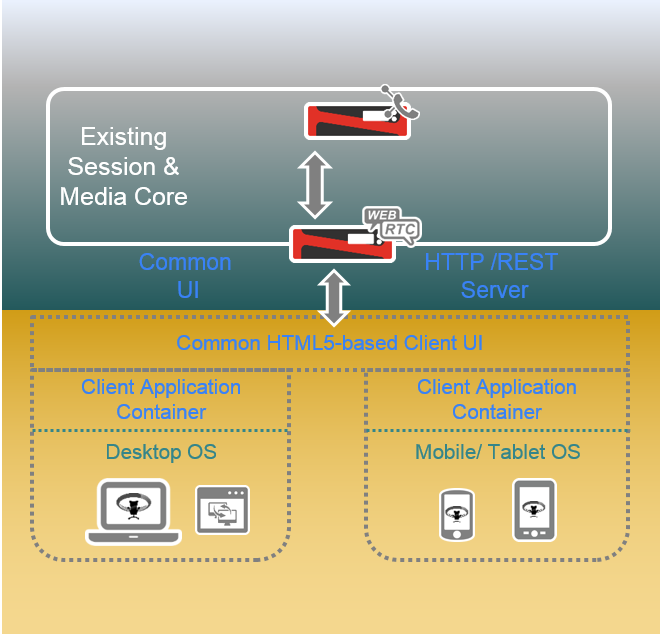WebRTC and client container technology – lower deployment costs without sacrificing functionality
 In the third of our WebRTC articles this week, Ralph Page, Strategic Solutions Director at GENBAND, looks at the emergence of client container technology.
In the third of our WebRTC articles this week, Ralph Page, Strategic Solutions Director at GENBAND, looks at the emergence of client container technology.
We’ve seen an explosion in Unified Communications solutions, each bringing their own ecosystem of apps to match a bevy of new devices. This hyper connectivity stampede means that a Service Provider launching a Unified Communications service needs to offer clients for PC, Mac, tablets(i.e. iPad & Android), phones (i.e. iPhone & Android) and Web browsers. Each of these clients’ needs to be kept up-to-date, driven by changes from both device vendors and operating system providers.
Further, some customers want custom-branded clients; each of these also has to be touched each time the base client is updated. Ultimately, Service Providers finds themselves upgrading at least one of their UC clients every quarter and potentially touching every customer that has a custom branded variant.
UC clients are particularly susceptible to OS and device changes because their very existence is tied to unifying multiple services and leveraging multiple device functions (speaker, mic, location, etc.). Not to mention that real time services don’t respond well to performance issues from lagging operating systems or apps.
In theory, simple WebRTC browser-based clients should be a cost-effective alternative. Using a browser means that changes are centralized in a web server. Web developers can customise features or deliver customised branding to individual enterprises using HTML5. No need for multiple apps and app store issues.
However, native WebRTC browser based clients, especially in mobile devices, have limitations. First and foremost, some devices don’t support WebRTC compliant browsers. More importantly, many mobile devices don’t give the browser access to push notifications services or allow access to contact lists or leverage battery-saving techniques.
Recently a new concept has emerged that leverages WebRTC and HTML5 but offers access to the best bits of the device’s operating system for push notifications, on-screen pop ups or the ability to start-up when the device starts. Unlike a simple browser, this new model uses a client container to dupe the device operating system into thinking it is a full application. However, the container itself runs its own browser so it can display the HTML5 content and deliver WebRTC services.
At GENBAND we’re very excited by the container concept and are embracing the model for all of our next generation Smart Office UC clients. See more at: http://www.genband.com/genband-perspectives/new-omni-client-technology-will-heat-unified-communications#sthash.9RRl3K45.pdf
Try out WebRTC for yourself… GENBAND KANDY is a real-time communications Platform-as-a-Service that provides access to voice, video, rich-messaging and collaboration services using WebRTC as an enabling technology. Developers can sign up to KANDY and start using their free accounts to run Quick-Start tutorials before integrating into their own applications. ITSPA UK members can enter their KANDY applications and ideas into the GENBAND UK Summer of Apps competition. http://www.trefor.net/events/webrtc-apps-competition/
Loads of posts on WebRTC in general on this site here.
Read the previous posts in this Genband sponsored WebRTC week:
The disruptive potential of WebRTC to communications networks by Greg Zweig
The role of the reseller in a software world by Chris Barley

